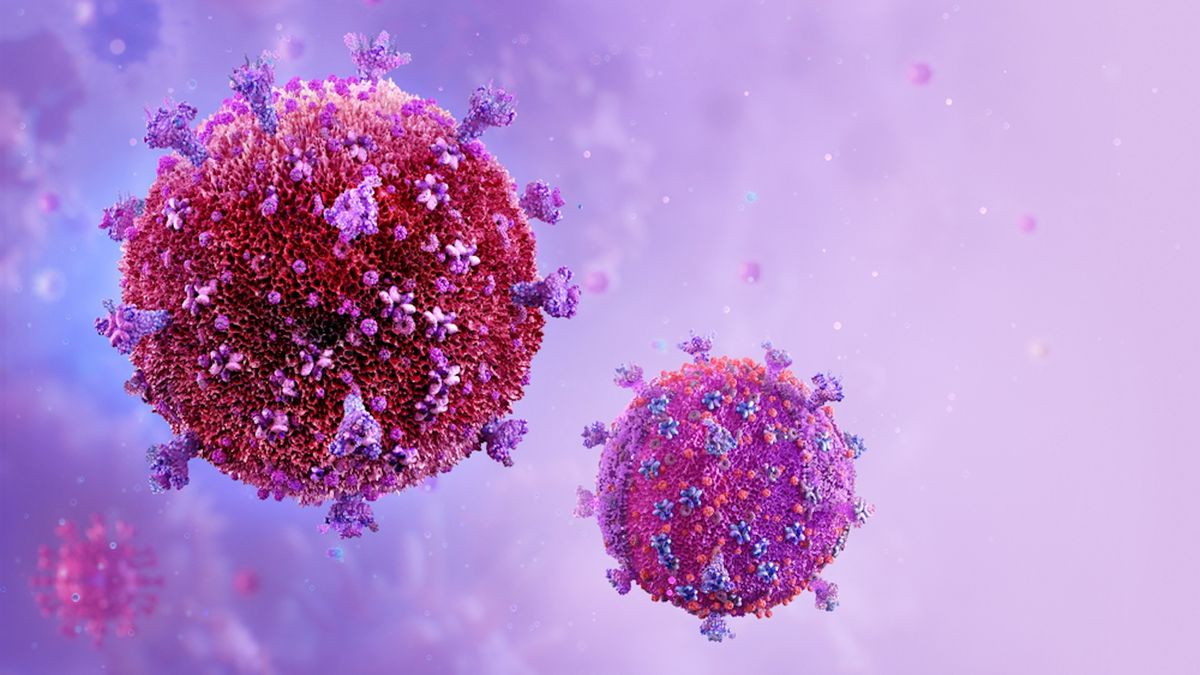Researchers have developed an experimental HIV treatment that sustains itself in the body, with the goal of controlling virus levels for the long term after a single dose.
So far, the new treatment has been tested in monkeys, not people. But in the monkeys, it dramatically suppressed HIV for at least seven months. If the drug is approved for people someday, its protection might last years, said Adrian Wildfire, a virologist and drug development scientist who was not involved in the research.
“I suspect you’ll see some decline in function [of the treatment] after five to seven years,” Wildfire told Live Science. That represents a big jump from current treatment options.
About 40 million people worldwide are living with HIV, but only about three-quarters of them are currently receiving antiretroviral therapy, the standard treatment. A smaller percentage are virally suppressed, meaning the amount of HIV in their body has declined to extremely low levels.
Related: We could end the AIDS epidemic in less than a decade. Here’s how.
Some people face difficulties obtaining an HIV diagnosis and therapy prescription; others may struggle to afford medication, tolerate its side effects, or remember to take the daily pills many treatment regimens require to keep the virus at bay. Some existing long-acting shots last weeks or months, but people typically need to reach suppression with pills before qualifying for the shots.
Complicating the challenge, the virus also evolves very quickly, meaning it can become resistant to treatments, especially if doses are missed. Without treatment, HIV rapidly destroys a key class of immune cell in the body, leaving the person vulnerable to cancers and infectious diseases. At this stage, the infection has progressed to acquired immunodeficiency syndrome (AIDS).
To overcome some of the issues with existing antiretrovirals, a group of researchers developed a new type of treatment: an engineered form of the virus that can outcompete HIV in the body.
In a study published Aug. 9 in the journal Science, the researchers used genetic engineering to create a version of HIV called a therapeutic interfering particle (TIP). This virus-like particle is designed not to harm its host, but it still replicates quickly. The idea is that, when injected into a person with HIV, the harmless TIP takes over, occupying and protecting cells that the virus would otherwise destroy.
To test that theory, the researchers developed a version of their TIP that resembled simian immunodeficiency virus (SIV), an HIV-like pathogen that infects monkeys. They injected it into six rhesus macaques (Macaca mulatta). After 24 hours, they infected the macaques with an aggressive virus with features of both SIV and HIV and tracked levels of infection for about seven months.
They found that the macaques that received TIPs had 10,000 times lower levels of virus than four infected monkeys that hadn’t received the shot. The TIP-injected monkeys also had stronger immune responses and no evidence of inflammation. The untreated monkeys had quickly developed severe illnesses.
Related: People on HIV meds have ‘almost zero’ chance of spreading virus via sex once levels are low
As designed, the TIPs continued to replicate in the macaques’ bodies throughout the entire study period, hinting that long-lasting treatment may be possible.
“These primate studies show the promise of a single-dose TIP intervention and are a strong indicator of efficacy in human trials,” senior study author Leor Weinberger, a professor of pharmaceutical chemistry, biochemistry and biophysics at the University of California, San Francisco, said in a statement.
The researchers also applied their TIPs to lab mice with human immune cells and to blood cells from people living with HIV. In both cases, the TIPs outcompeted HIV and suppressed the infection.
“You’re reducing viral replication a lot, which could allow people to live with fewer symptoms because far fewer of their T cells are being destroyed,” Wildfire told Live Science. But he doesn’t think the treatment will last indefinitely.
Because of their similarity to unmodified viruses, TIPs stimulate various immune cells in the body that can eventually become exhausted by this. This opens the door for more TIPs and HIV to enter cells — but since HIV continually evolves, this exhaustion could theoretically allow HIV to gain a foothold over TIPs.
“So what’s the outlook on this? Relatively positive in the short term, but I think more work is needed in the long run,” Wildfire said.
The researchers have not yet tested whether this new treatment could replace antiretroviral drugs for people who are already living with well-controlled HIV. Their next step is to test this idea in macaques, after which they hope to embark on human clinical trials. The end goal is to offer new options for HIV treatment so people won’t have to take medications continually for the rest of their lives.
Ever wonder why some people build muscle more easily than others or why freckles come out in the sun? Send us your questions about how the human body works to community@livescience.com with the subject line “Health Desk Q,” and you may see your question answered on the website!





















Discussion about this post